SecureVault User Guide
Contents
Introduction to SecureVault
Welcome to SecureVault, your secure file storage and encryption solution. This guide will walk you through all the features of the application and how to use them effectively.
SecureVault uses advanced encryption techniques including RRPBA (Rounds-based Permutation Block Algorithm) to ensure your files remain private and secure.
Note: SecureVault is designed with security in mind. All encryption and decryption happens on the server, protecting your encryption keys from exposure.
Getting Started
1. Account Registration
- Navigate to the registration page by clicking "Register" in the top navigation menu.
- Enter your name, email address, and choose a strong password.
- Click "Register" to create your account.

2. Logging In
- Navigate to the login page by clicking "Login" in the top navigation menu.
- Enter your registered email and password.
- Click "Log in" to access your secure dashboard.

3. Dashboard Overview
After logging in, you'll be directed to your dashboard where you can:
- See an overview of your stored files
- View your encryption keys
- Access all main features of the application
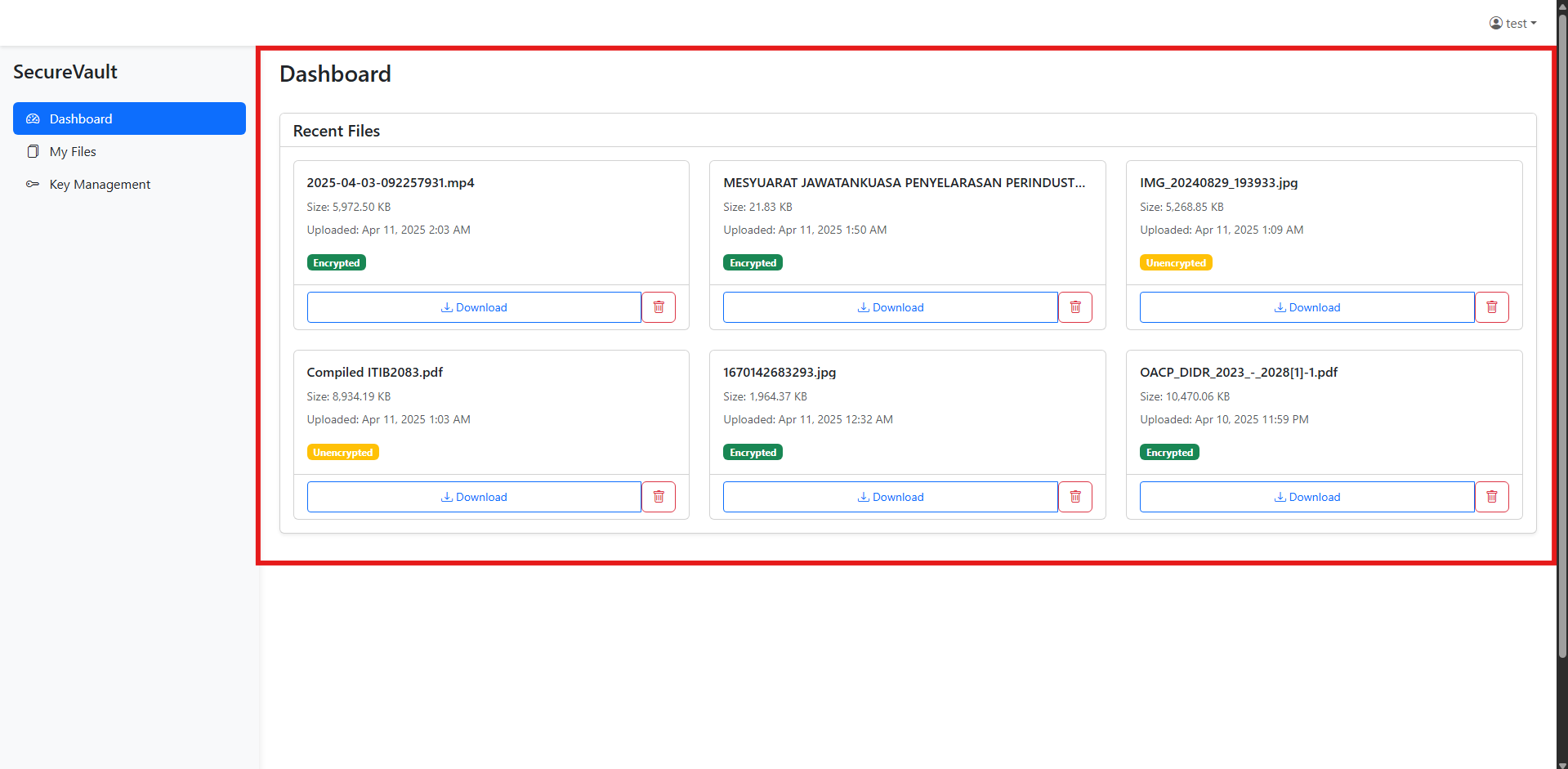
File Management
1. Uploading Files
- From your dashboard, navigate to the "Files" section.
- Click the "Upload File" button.
- Select a file from your computer to upload.
- Click "Upload" to store your file securely.
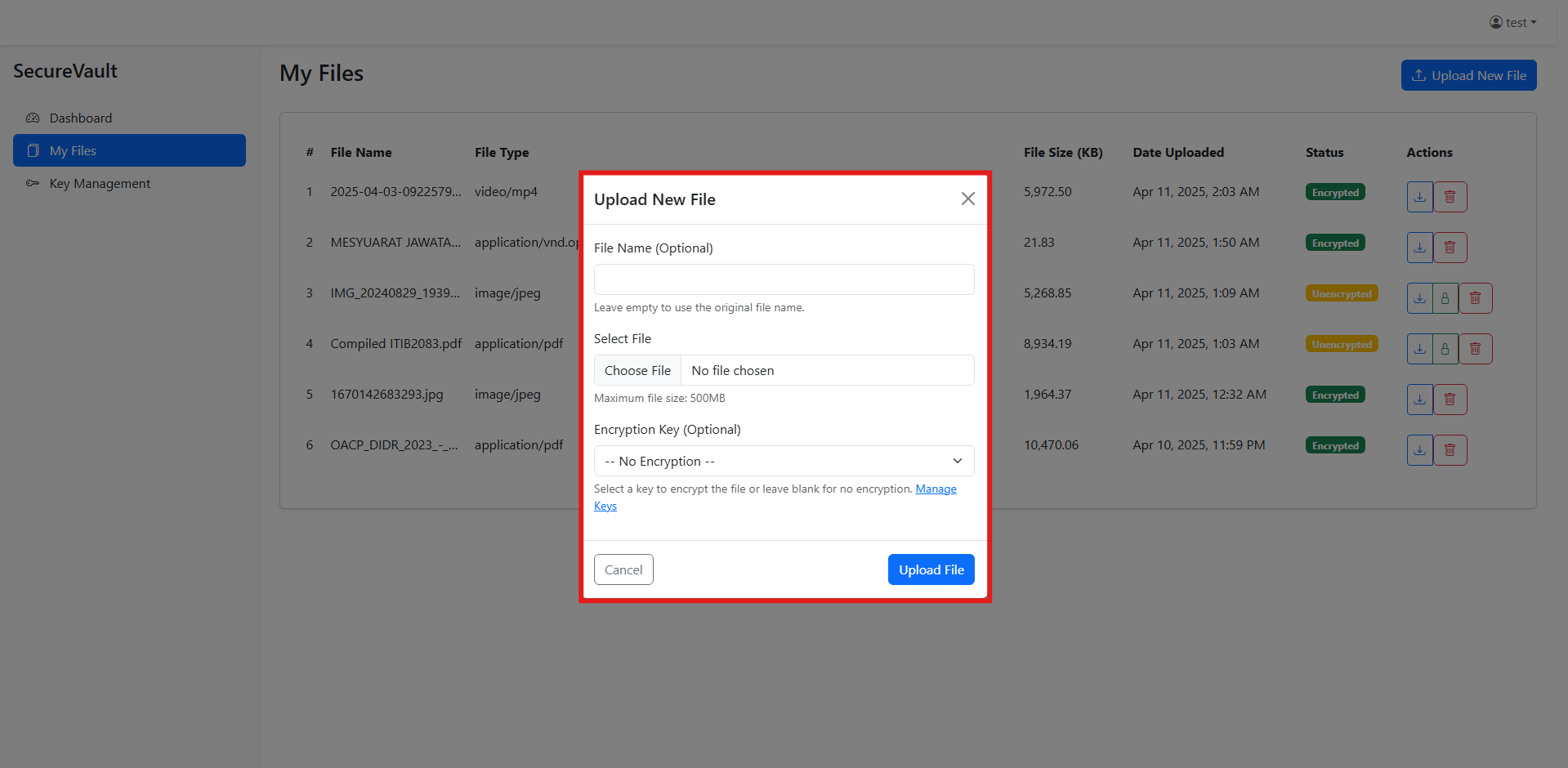
2. Encrypting Files
- Locate the file you want to encrypt in your files list.
- Click the "Encrypt" button next to the file.
- Select an encryption key from your available keys.
- Click "Confirm" to encrypt the file.
- Wait for the encryption process to complete.
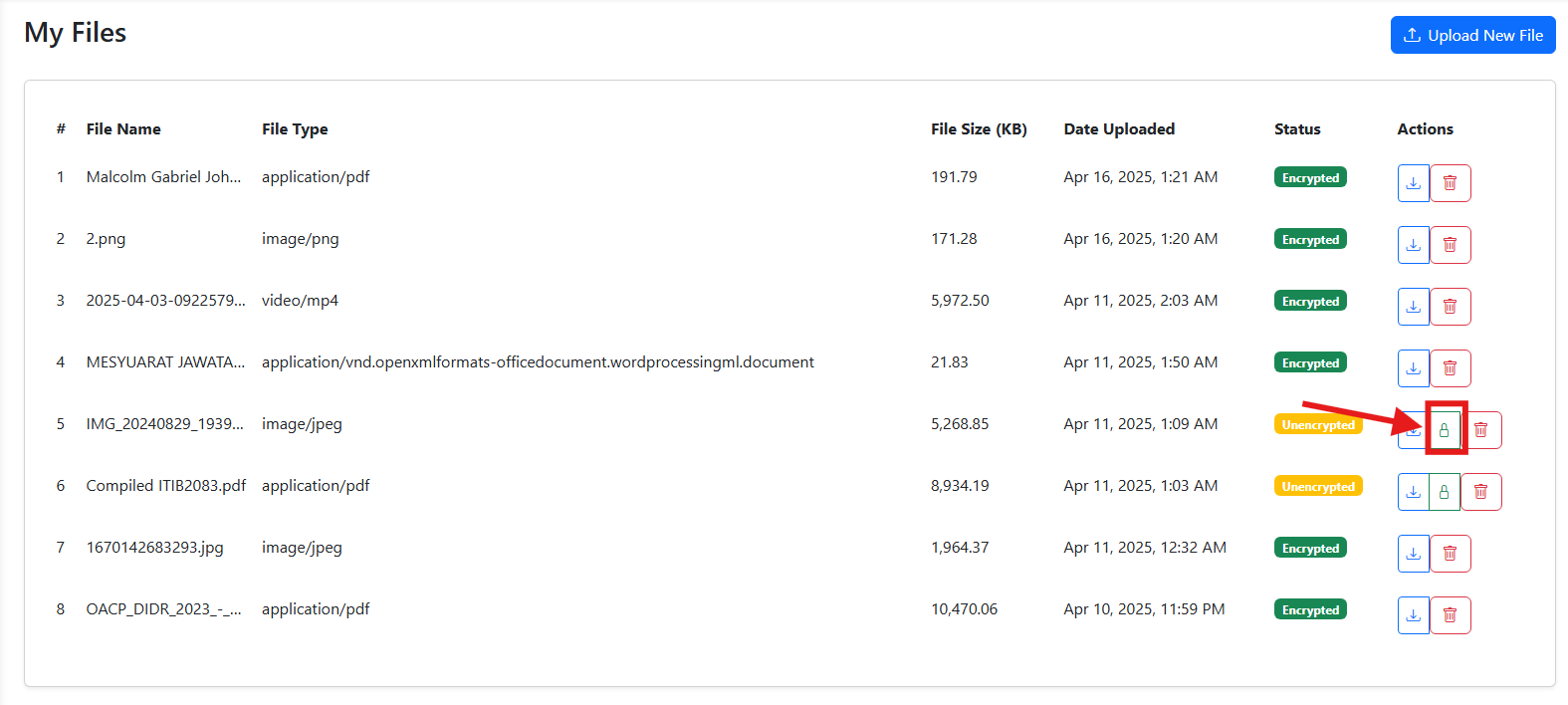
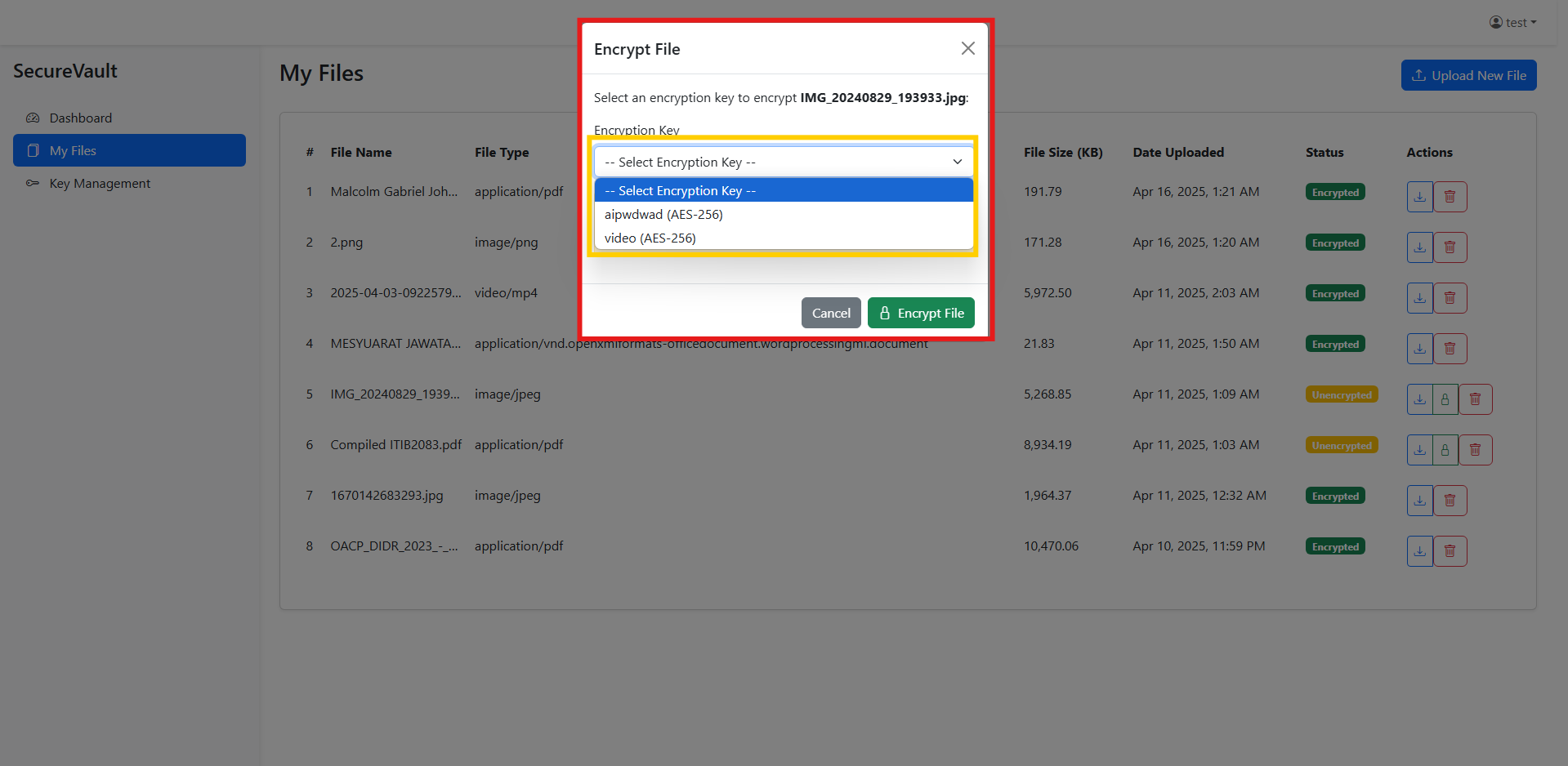
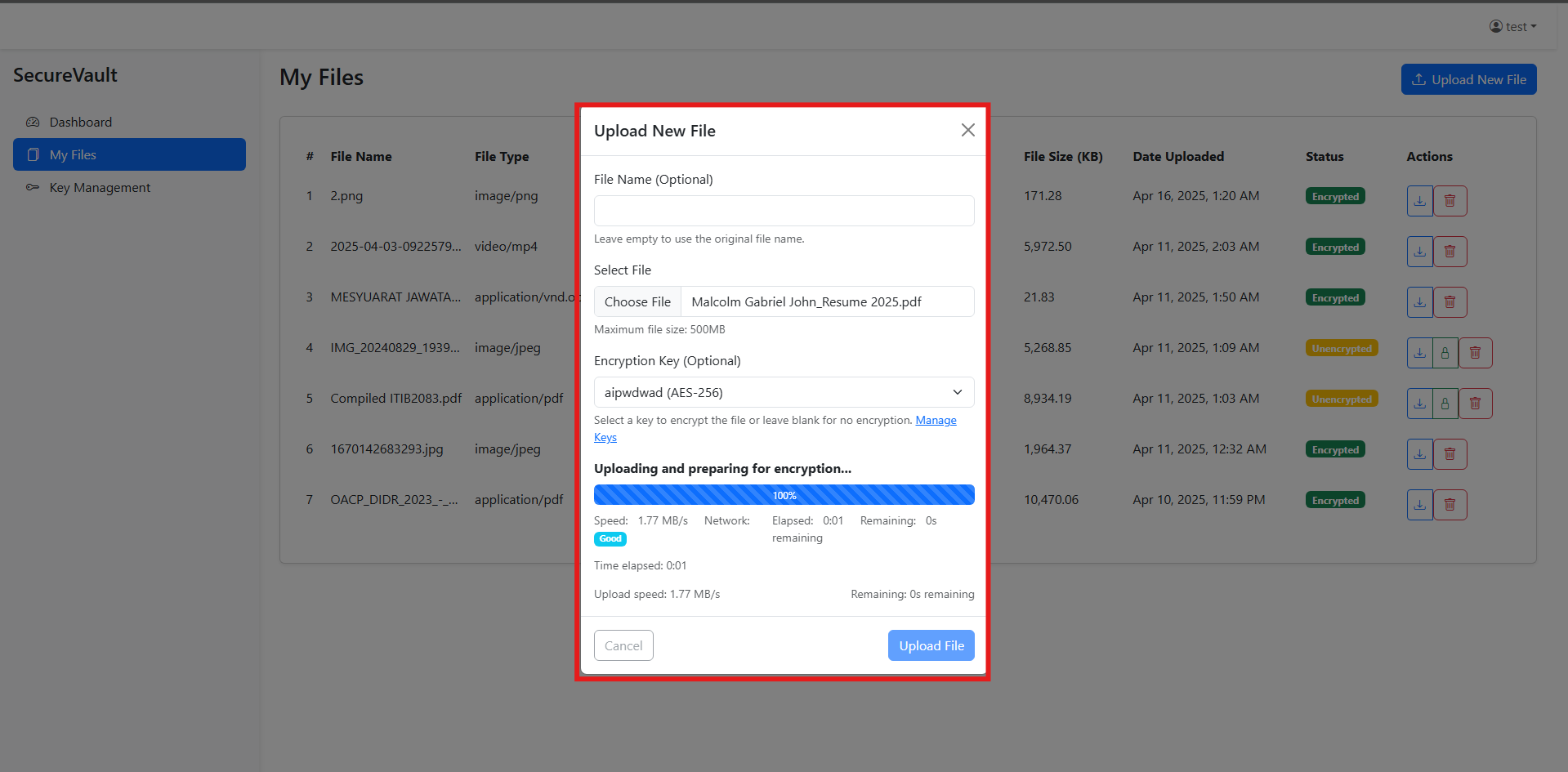
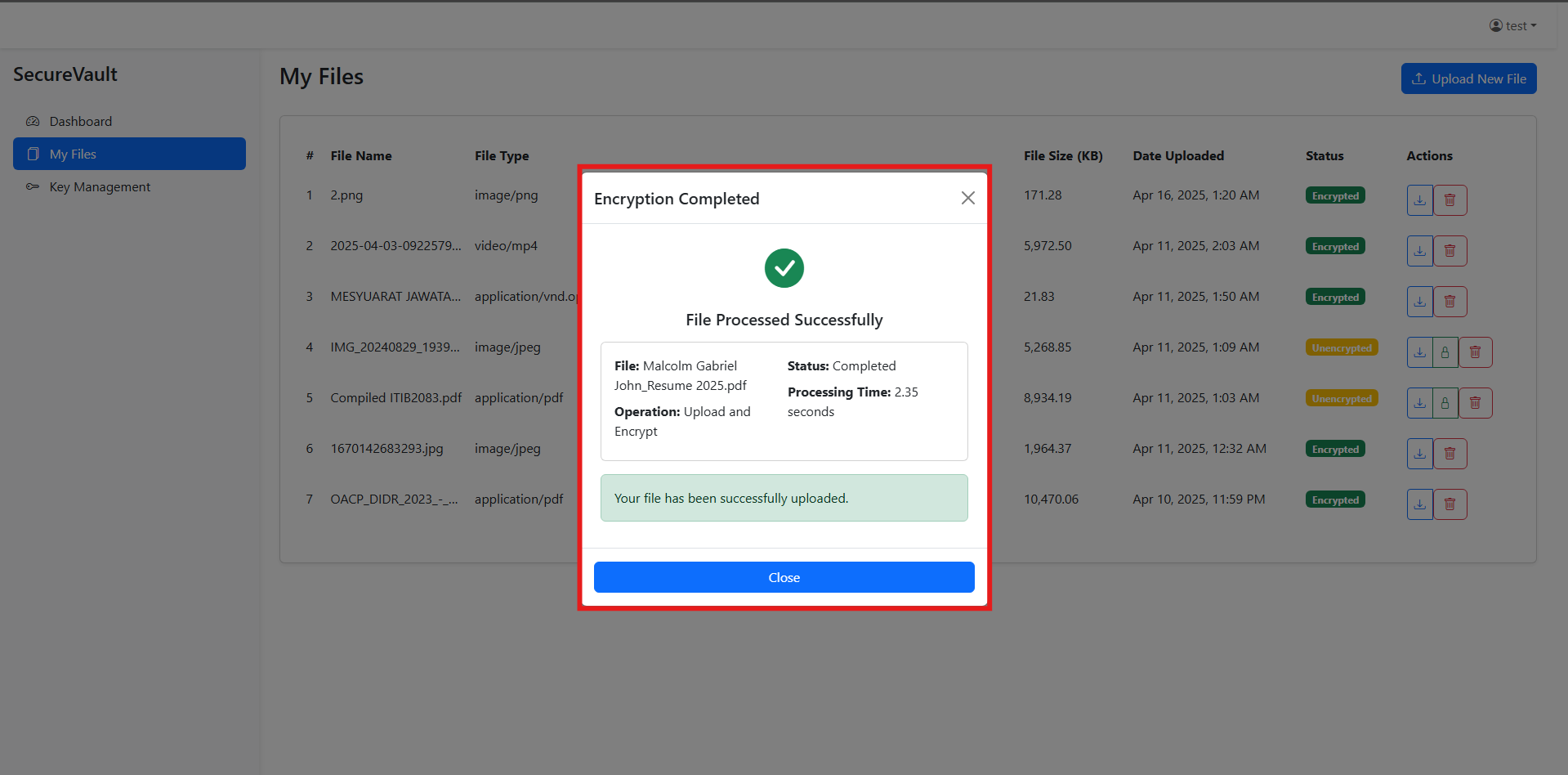
Note: Encryption may take time for larger files. Don't close your browser during this process.
3. Managing Your Files
You can view all your files from the My Files section:
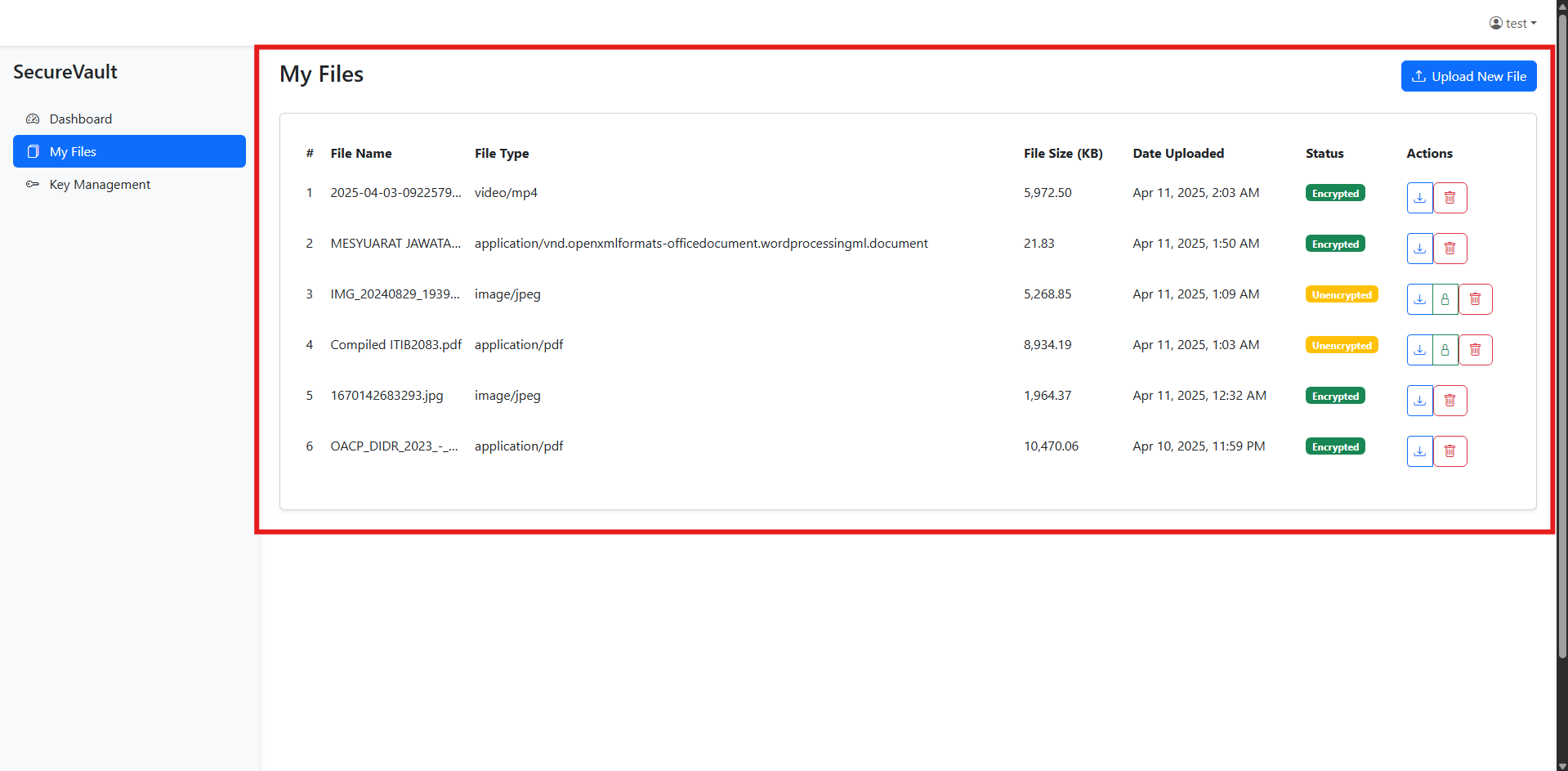
4. Downloading Files
- Locate the file you want to download in your files list.
- Click the "Download" button next to the file.
- If the file is encrypted, it will be decrypted temporarily for download.
- The file will be downloaded to your device.
Tip: For large encrypted files, consider decrypting them first before downloading to avoid timeout errors.
5. Deleting Files
- Find the file you want to delete in your files list.
- Click the "Delete" button next to the file.
- Confirm the deletion by clicking "Yes, delete".
- The file will be permanently removed from your storage.


Warning: File deletion is permanent and cannot be undone.
Encryption Key Management
1. Creating Encryption Keys
- Navigate to the "Key Management" section from your dashboard.
- Click "Generate New Key".
- Enter a name for your key (for your reference).
- Select the key size (256-bit recommended for stronger encryption).
- Click "Generate Key" to create your new encryption key.


2. Managing Your Keys
In the Key Management section, you can:
- View all your encryption keys
- Delete keys that are no longer needed
- See which files are encrypted with each key
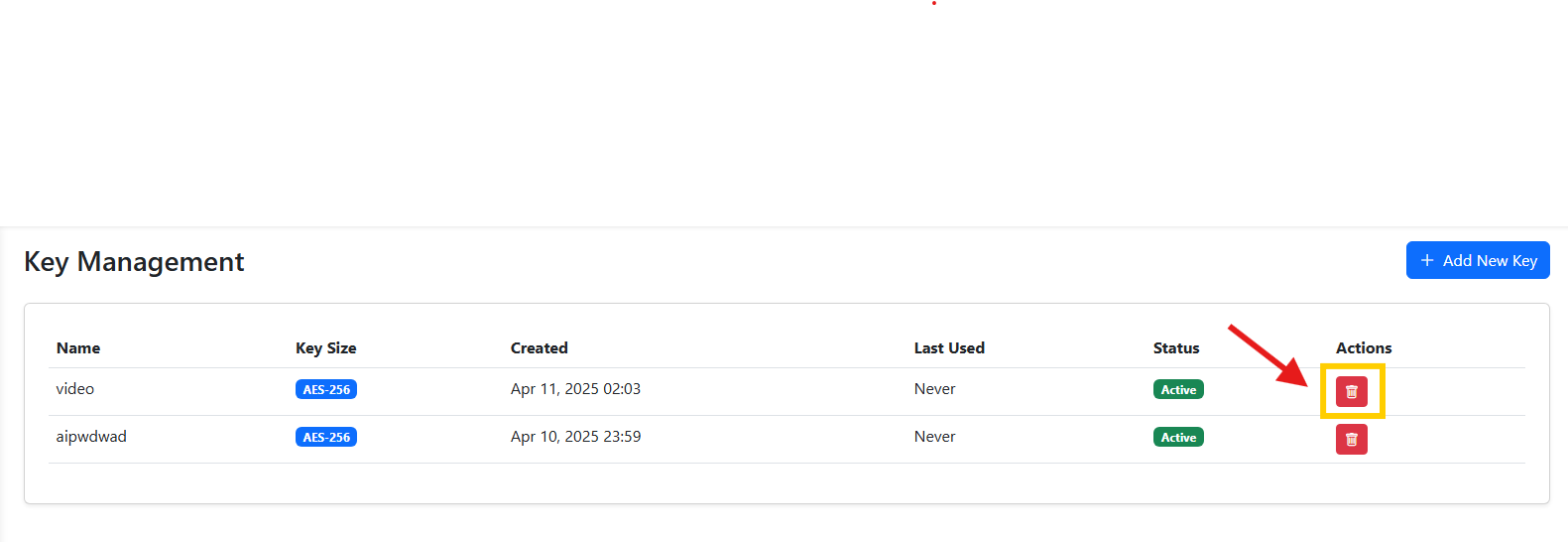

Important: Deleting a key will make files encrypted with that key permanently inaccessible.
Other Features
Profile Management
Manage your account settings:
- Click on your profile name in the top-right corner.
- Select "Profile" from the dropdown menu.
- Update your personal information or change your password.
- Click "Save" to apply changes.

Troubleshooting Common Issues
File Upload Errors
Problem: "413 Request Entity Too Large" error when uploading files.
Solution: The file exceeds the maximum upload size limit. Try uploading a smaller file.
Long Encryption/Decryption Times
Problem: Encryption or decryption takes a very long time.
Solution: This is normal for larger files. Consider encrypting smaller chunks of data if possible.
Download Timeout Errors
Problem: "504 Gateway Timeout" error when downloading large encrypted files.
Solution: For very large files:
- Decrypt the file first, then download it separately
- Split large files into smaller segments before encryption
Lost Encryption Keys
Problem: You deleted an encryption key that was used for files.
Solution: Always decrypt files before deleting keys. Files encrypted with deleted keys are permanently inaccessible.
Security Best Practices
Password Security
- Use strong, unique passwords for your SecureVault account
- Change your password regularly
- Never share your password with others
Encryption Key Management
- Create descriptive names for your encryption keys
- Use 256-bit keys for maximum security
- Decrypt all files associated with a key before deleting it
Session Security
- Always log out when you're finished using SecureVault
- Don't use SecureVault on public or shared computers
- Close your browser after logging out for added security